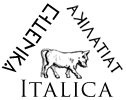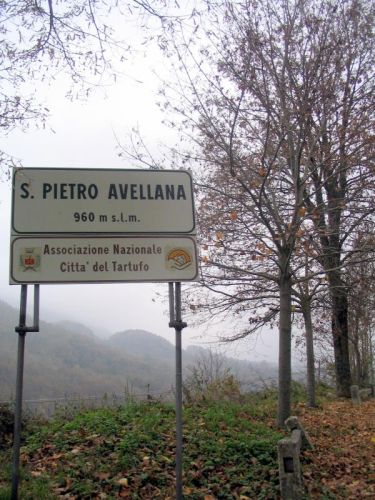
 | San Pietro Avellana (IS), Molise |
 | This town of 662 in the uplands of Molise (960 meters above sea level) was almost completely destroyed in the waning days of World War II, during fighting between the retreating German army and advancing Canadian paratroopers. Today it is a member of the Associazione Nazionale Citta' del Tartufo ("National Association of Cities of the Truffle") and accordingly plays host to a biannual Truffle Festival. So it was that I found myself visiting on the dreary First of November, 2005, to help Mario Borraro sell his pecorino among the tables full of truffles, truffle oil, truffle pastries, truffle pasta and other delights. During lulls in the activity I wandered all around the town, visiting the public fountain, the church and its largo, and the local museum. Thanks to Mark DiVecchio for some friendly clarifications; see also his site on the town. |
 |
 |
 |
 |
AMICUS GIANCOLA LEO= NARDUS ANT MARIANI & PASCHALIS DE SANZA ADMINISTRATORES PETRI DE AVELLANA CIUIBUS FONTEM EREXERUNT KAL JULII MDCCLXXXVIII |
With public money, Amico Giancola, Leonardo Antontio Mariani and Pasquale DeSanza, the administrators, erected (this) fountain for the citizens of Pietro de Avellana, the Kalends of July (July 1), 1788. |
NON POTABILE | Don't drink the water. |
 |
This page and its contents, including photographs and text, unless otherwise noted, are copyrighted by Dan Diffendale, 2005-2011. Comments and questions may be addressed to dpd_@_ sas.upenn.edu This page last updated January 3, 2011. |